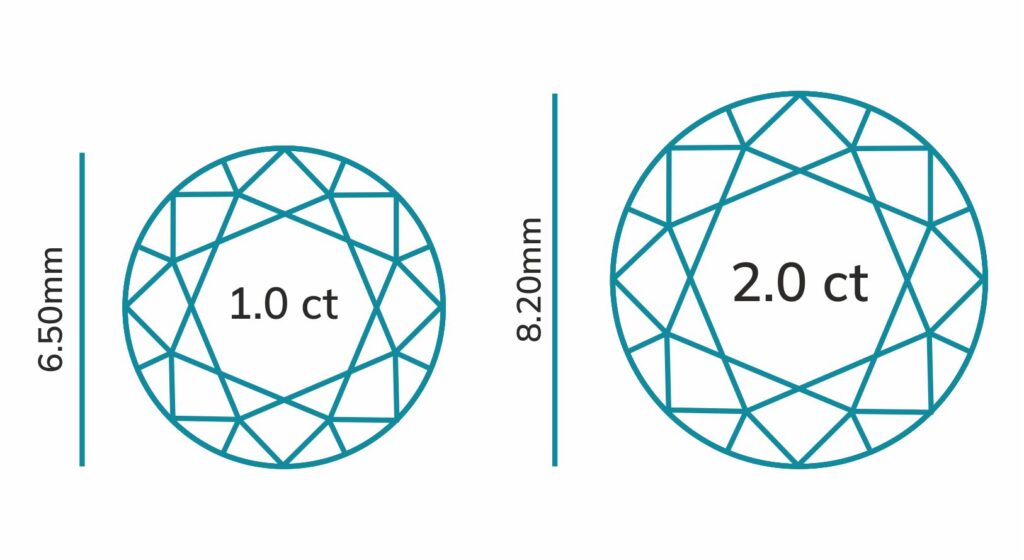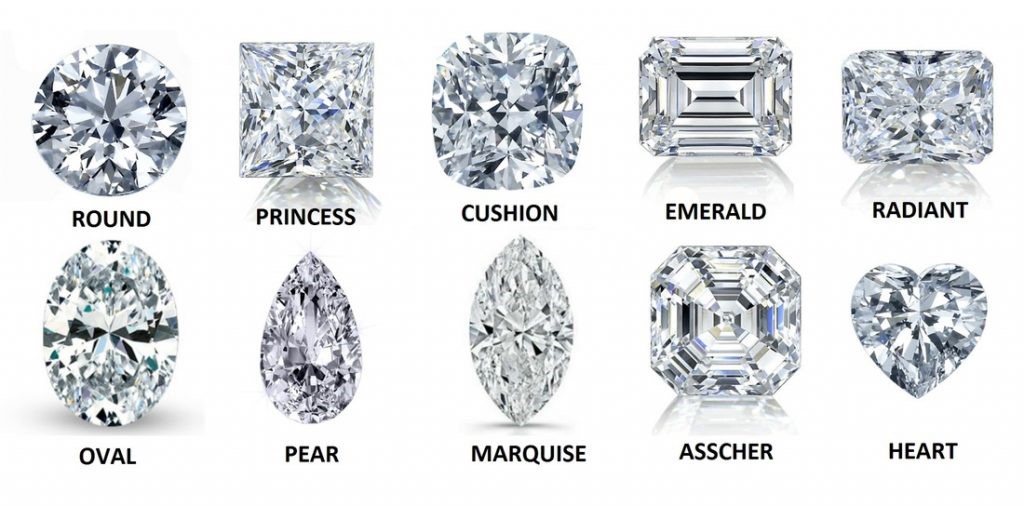The 6 Cs of Diamond
Cut
The Cut is the key element that affects a diamond’s beauty. While it is often mistaken with the diamond shape, it is actually what determines the diamond’s symmetry, proportion, and polish. A diamond with a flawless clarity can still look lacklustre if the cut is not ideal. To achieve maximum sparkle and scintillation, the cut grade should be excellent or very good. Cut grades range from excellent to poor, with diamonds that have a fair or poor cut appearing dull and lifeless.
For fancy shaped diamonds like pear or heart-shaped, there are no cut grades on the certificate as their proportions and facet arrangements have wider parameters. They only have symmetry and polish grades. Our experts can help you find a fancy shaped diamond with good proportions for maximum sparkle, simply get in touch with us.
For fancy shaped diamonds like pear or heart-shaped, there are no cut grades on the certificate as their proportions and facet arrangements have wider parameters. They only have symmetry and polish grades. Our experts can help you find a fancy shaped diamond with good proportions for maximum sparkle, simply get in touch with us.

Color
Interestingly, the ideal color for a diamond is “colourless”. Diamonds are rated on a scale from D (colourless) to Z (light yellow). Diamonds with a grade beyond Z are considered fancy coloured diamonds and are evaluated using a different color scale. The difference in color between diamonds within the same color family may not be noticeable to the untrained eye, but it does affect the diamond’s quality and price.

Clarity
When diamonds are created deep within the earth’s crust, under intense heat and pressure, they can develop imperfections and trap mineral impurities within their crystal structure. These imperfections determine the diamond’s clarity grade. Diamonds without such impurities are very rare.
An “eye-clean” diamond refers to one that doesn’t have any noticeable imperfections with the naked eye. These diamonds offer excellent value and are much more affordable than diamonds with the highest clarity grades. To get the best value for your money, consider looking for eye-clean diamonds in the VS1-2 range.
The clarity grading scale ranges from Flawless/Internally Flawless (FL/IF), Very very Slightly Included (VVS1/VVS2), Very Slightly Included (VS1/VS2), Slightly Included (SI1/SI2), to Included (I1, I2, and I3).
An “eye-clean” diamond refers to one that doesn’t have any noticeable imperfections with the naked eye. These diamonds offer excellent value and are much more affordable than diamonds with the highest clarity grades. To get the best value for your money, consider looking for eye-clean diamonds in the VS1-2 range.
The clarity grading scale ranges from Flawless/Internally Flawless (FL/IF), Very very Slightly Included (VVS1/VVS2), Very Slightly Included (VS1/VS2), Slightly Included (SI1/SI2), to Included (I1, I2, and I3).

Carat
The carat weight refers to the weight of a diamond, and should not be confused with the term “karat” which is used to measure the purity of gold. Comparing carat with grams, 1 carat is equivalent to 0.2 grams (0.50 carat =0.1 gram and 5 carat = 1 gram). As the carat weight of a diamond increases, so does its size, but this relationship is not linear. In other words, a 2 carat diamond will not look twice as big as a 1 carat diamond. Click here to download the Diamond size chart. Print the chart on an A4 paper to have a clear idea of how big a particular carat of diamond will look like.
Carat weight is a significant factor in determining the cost of a diamond. In general, the larger the carat weight, the more expensive the diamond will be. The price tends to increase at certain “magic sizes” like 0.5, 1.0, 1.5, 2.0 carats, etc. However, buying a diamond just below a “magic size” such as a 0.95 carat instead of a 1.0 carat, can result in cost savings while having minimal impact on appearance.
Carat weight is a significant factor in determining the cost of a diamond. In general, the larger the carat weight, the more expensive the diamond will be. The price tends to increase at certain “magic sizes” like 0.5, 1.0, 1.5, 2.0 carats, etc. However, buying a diamond just below a “magic size” such as a 0.95 carat instead of a 1.0 carat, can result in cost savings while having minimal impact on appearance.

Certification
To get an impartial evaluation of your diamond’s quality, it is important to choose a leading certification laboratory. GIA, HRD, IGI, and EGL are the top grading organizations in the diamond industry. For most diamonds over 0.50 ct, the diamonds are certified from one of these bodies.
Laser Inscription
Certification organizations provide a unique identifier for every diamond to secure the interests of the buyer. The identifier, a laser inscribed number on the diamond’s girdle, can be easily checked with a magnifying lens to confirm the diamond’s authenticity and match the information listed on the certificate.
Laser Inscription
Certification organizations provide a unique identifier for every diamond to secure the interests of the buyer. The identifier, a laser inscribed number on the diamond’s girdle, can be easily checked with a magnifying lens to confirm the diamond’s authenticity and match the information listed on the certificate.

Contour
Diamond shape is a defining characteristic of a diamond. There are two main categories: round diamonds and fancy shaped diamonds. Round diamonds, also known as round brilliant cut, are the most commonly used and classic choice. Fancy shaped diamonds come in various shapes such as Pear, Oval, Princess, Cushion, Emerald, Heart, etc.
Each shape offers its own unique beauty, so it ultimately depends on your personal style and preference. If you prefer a classic and timeless look, a round diamond may be the perfect option for you. If you’re interested in a fancy shape diamond, reach out to our expert to help you find one with optimal proportions for maximum brilliance.
Each shape offers its own unique beauty, so it ultimately depends on your personal style and preference. If you prefer a classic and timeless look, a round diamond may be the perfect option for you. If you’re interested in a fancy shape diamond, reach out to our expert to help you find one with optimal proportions for maximum brilliance.

